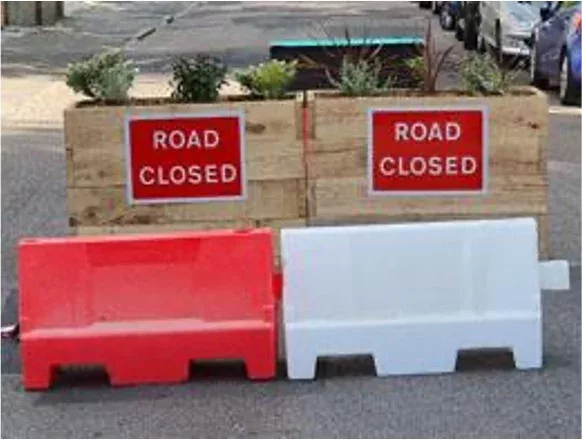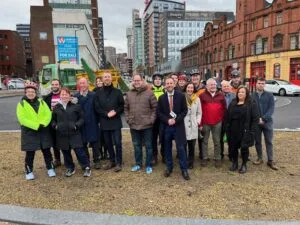Most of the Low Traffic Neighbourhood (LTN) road closures will be removed as Tower Hamlets Council promises to find ‘less divisive’ ways to achieve cleaner air.
The council will invest £6m in measures to improve air quality, including building more infrastructure to enhance public spaces and encourage walking and cycling, including planting more trees. It will also work with residents on new schemes that are more universally supported.
As with the rest of London, the LTN road closures, called Liveable Streets, have proved controversial, pitting residents against each other. The latest consultation shows around 41.7% of Tower Hamlets residents in the LTN area in favour of removal and 57.3% wanting to keep them.
Emergency and some council services have also been split about their use, for example London Ambulance Service opposes hard physical closures.
At the council’s Cabinet meeting on Wednesday, Mayor Lutfur Rahman decided to remove the restrictions in Columbia Road, Arnold Circus, and Old Bethnal Green – although the road closure on Canrobert Street will be retained. He had already decided to keep the bus gate restriction in Wapping due to exceptional support in a consultation last autumn.
The improvements made to accessible walking routes and pedestrian space will also be retained, along with the 33 School Streets which facilitate the timed closure of roads during drop-off and pick-up of school children.
Lutfur Rahman, Executive Mayor of Tower Hamlets, said: “LTNs have been one of London’s most contentious issues – a one-size-fits-all solution that has divided boroughs, communities, and even political parties. The repercussions have been more severe in Tower Hamlets as an inner-city borough with little space to move around.
“While LTNs improve air quality in their immediate vicinity, they push traffic down surrounding arterial roads, typically lived on by less affluent residents. They are also a barrier for families to get around in what is the most densely populated place in the country.
“The result is division. Although I pledged to remove these schemes, I wanted to consult to get a better understanding of the impacts.
“We have seen people on both sides try to skew the results of our consultation. Ultimately, I am interested in the views of Tower Hamlets residents in the affected areas.
“I must now make a decision as Mayor, and I have decided that division is not the answer. We need to find better solutions to improve air quality that can unite our residents and businesses.
“We will retain some of the universally beneficial features such as accessible walking routes and pedestrian spaces, along with all 33 School Streets timed closures. We will invest £6m in new measures to make our roads safer and enhance our public spaces.
“And I pledge to work with our residents and businesses on new schemes that bring more people together to achieve cleaner air.”
The two most polluting roads in Tower Hamlets are the A11 and A12 rather than the LTN areas. Both A roads are owned and managed by Transport for London (TfL) and often exceed the legal limit of 40micrograms/cubic metre for NO2. The council would like to see more done by TfL to mitigate the pollution they cause.
Liveable Streets was introduced during the Covid pandemic. In other London boroughs they were called Low Traffic Neighbourhoods (LTNs).
The programme has delivered on some of its key objectives by reducing some traffic levels.
However, feedback received by the council shows there have also been adverse impacts, including access problems for people reliant on vehicle use for services such as medical appointments, childcare and other support networks.
Access has also been hindered for emergency access vehicles particularly around Arnold Circus and Bethnal Green. Data also shows that there has been an impact on some local bus services, and of displaced traffic on surrounding roads and streets.
The council will now set a timetable for when the road closures will be removed.

























